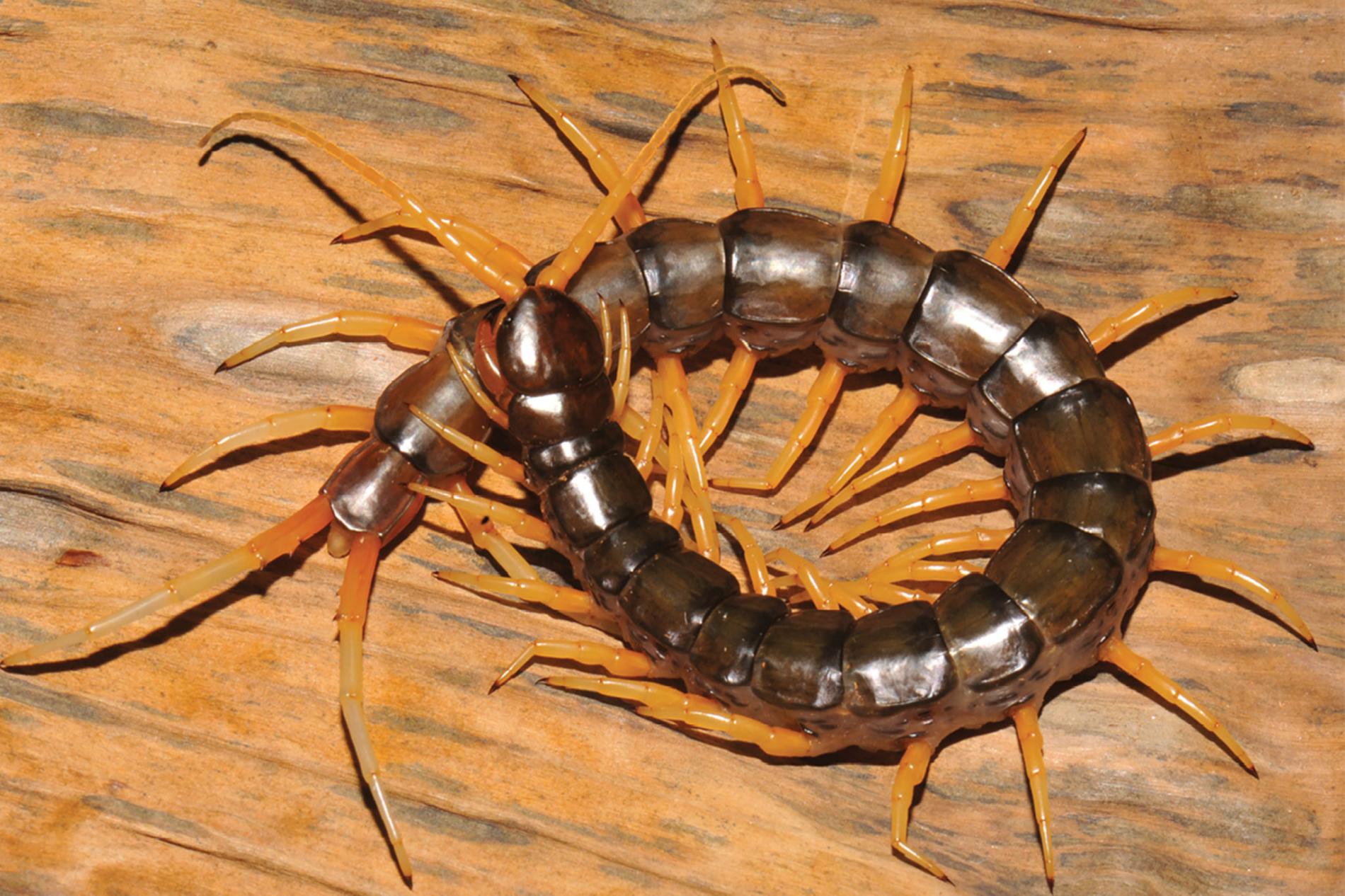This giant, venomous creepy-crawly is as comfortable swimming and walking underwater as it is on land, in a finding that surprised scientists.
Just when you thought it was safe to go in the water—look out for giant, swimming centipedes!
Scientists have recently described the world’s first known amphibious centipede. It belongs to a group of giant centipedes called Scolopendra and grows up to 20 centimeters (7.9 inches) long.
Like all centipedes, it is venomous and carnivorous. Thankfully, this new water-loving species appears to live only in Southeast Asia. The creature’s description was published last month in the journal ZooKeys.
Centipede Serendipity
George Beccaloni of the Natural History Museum in London was on his honeymoon in Thailand in 2001. And like any good entomologist, he was looking for bugs.
“Wherever I go in the world, I always turn over rocks beside streams, and that’s where I found this centipede, which was quite a surprise,” says Beccaloni.
“It was pretty horrific-looking: very big with long legs and a horrible dark, greenish-black color,” he says.
When Beccaloni lifted the rock it was hiding under, the centipede immediately escaped into the stream, rather than into the forest. It ran along the stream bed underwater and concealed itself under a rock.
With some difficulty, Beccaloni captured the centipede and later put it in a large container of water. He says it immediately dove to the bottom and swam powerfully like an eel, with horizontal undulations of its body. When he took the centipede out of the container, the water rolled off its body, leaving it totally dry.
Beccaloni brought his specimen back to the Natural History Museum in London and asked a centipede expert about his observations. The expert was skeptical, because Scolopendra are found in dry habitats and no centipedes were known to be amphibious. So the specimen sat in the museum’s collection for years.
Finally, a New Species
Meanwhile, Beccaloni’s colleague at the Museum, Gregory Edgecombe, and his student in Thailand, Warut Siriwut, were on the verge of describing a new species of centipede.
They had collected two specimens near waterfalls in Laos, and DNA analysis confirmed it was a new species. They named the centipede Scolopendra cataracta, from the Latin for “waterfall.”
Beccaloni shared the observations of his specimen’s amphibious behavior with Edgecombe, and they confirmed that his honeymoon centipede was an example of S. cataracta.
The entire species is known from just four specimens: the two collected in Laos, Beccaloni’s swimming specimen from Thailand, and a fourth specimen that was collected in Vietnam in 1928 and was in the collection at the Natural History Museum in London, misidentified as a more common species.
Beccaloni believes S. cataracta exploits a different ecological niche from other centipedes.
“Other Scolopendra hunt on land,” he says. “I would bet this species goes into the water at night to hunt aquatic or amphibious invertebrates.”
Like all centipedes, this new amphibious species is venomous. Although you would not want to be bitten by one, it probably wouldn’t kill you—it would just cause agonizing pain.
“All large Scolopendra can deliver a painful bite, the ‘fang’ of the venom-delivery system being able to pierce our skin,” says Edgecombe.
Bites from related centipedes of about the same size as S. cataracta cause a burning pain that can spread the length of the entire arm or leg if a finger or toe is envenomated. Edgecombe says the pain may persist for a few days, but probably won’t leave one with any longer-lasting effects.
It sounds like some people’s worst nightmare: if you go for a dip in a nice stream at night, there might be giant centipedes lurking in the water.
But to scientists like Beccaloni and Edgecombe, the new discovery is further proof of all the wonders of nature that are still unknown to us.
“People tend to study streams in the tropics during the day, but there is probably a whole other range of interesting amphibious things that come out at night,” says Beccaloni. “It would be good to study these streams and their fauna then to see what is actually going on under the cover of darkness.”
Source: National Geographic



